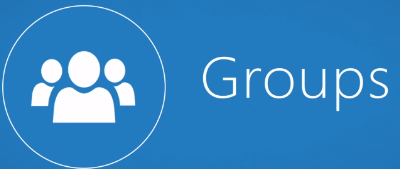Migrating Distribution Lists to Office 365 Groups
Office 365 Groups (that’s Groups with a capital “G”) are a newish feature of Office 365 that allow...


Two organizations each have Microsoft 365 tenants and they want to work together on several projects – some of which run for a limited time and some of which are ongoing. How can these organizations enable their people and teams to collaborate more effectively and productively across their different tenants? Add on top of this, how can this be done in a secure and compliant manner? This article describes several key collaboration options that administrators at each organization can consider as shared goals.
Exchange Online collaboration options
SharePoint Online and OneDrive for Business collaboration options
Microsoft 365 collaboration options
Teams collaboration option
Microsoft 365 inter-tenant collaboration options include using a central location for files and conversations, sharing calendars, using IM, audio/video calls for communication, and securing access to resources and applications.
What exactly can be shared across user accounts, licenses, subscriptions, and storage? Each organization maintains its own user accounts, identities, security groups, subscriptions, licenses, and storage. People use the collaboration features in Microsoft 365 together with sharing policies and security settings to provide access to needed information while maintaining control of company assets.
Can we share domain namespaces across Microsoft 365 tenants? No. Organization domain names, such as fabrikam.com or tailspintoys.com, can only be associated and used with a single Microsoft 365 tenant. Each tenant must have its own namespace. UPN, SMTP, and SIP namespaces cannot be shared across tenants.
What about hybrid components and Microsoft 365 inter-tenant collaboration? On-premises hybrid components, such as an Exchange organization and Azure AD Connect, cannot be split across multiple tenants.
Microsoft collaboration apps efficiently and effectively support day-to-day work activities for employees, partners and vendors – which ever tenant they may reside in. It is crucial that Office 365 is available when needed, wherever needed, and across various teams internally and externally. Because today’s businesses are heavily reliant on technology, specifically Office 365, it becomes a significant barrier to end user productivity when (not if) systems fail. To get the most out of your collaboration platform, you can avoid top Office 365 admin challenges, by monitoring service availability and reviewing all back-end settings and policies to find the right balance between security and governance and employee productivity.
In a cloud-world, outages are bound to happen. While Microsoft is responsible for restoring service during outages, IT needs to take ownership of their environment and user experience. It is crucial to have greater visibility into business impacts during a service outage the moment it happens.
ENow’s Office 365 Monitoring and Reporting solution enables IT Pros to pinpoint the exact services effected and root cause of the issues an organization is experiencing during a service outage by providing:
Identify the scope of Office 365 service outage impacts and restore workplace productivity with ENow’s Office 365 Monitoring and Reporting solution. Access your free 14-day trial today!

AmyKelly Petruzzella is a marketing executive who focuses on Microsoft Exchange, Office 365, and Active Directory trends, challenges, and business outcomes for enterprises. Over the years, AmyKelly regularly engages with Gartner industry analysts, and she has been recognized several times for Top 50 Microsoft Marketing Excellence. She is a frequent speaker and blogger and an industry veteran who advocates for women in technology.


Office 365 Groups (that’s Groups with a capital “G”) are a newish feature of Office 365 that allow...


With the rise of mobile computing and social networks, organizations have seemingly endless...